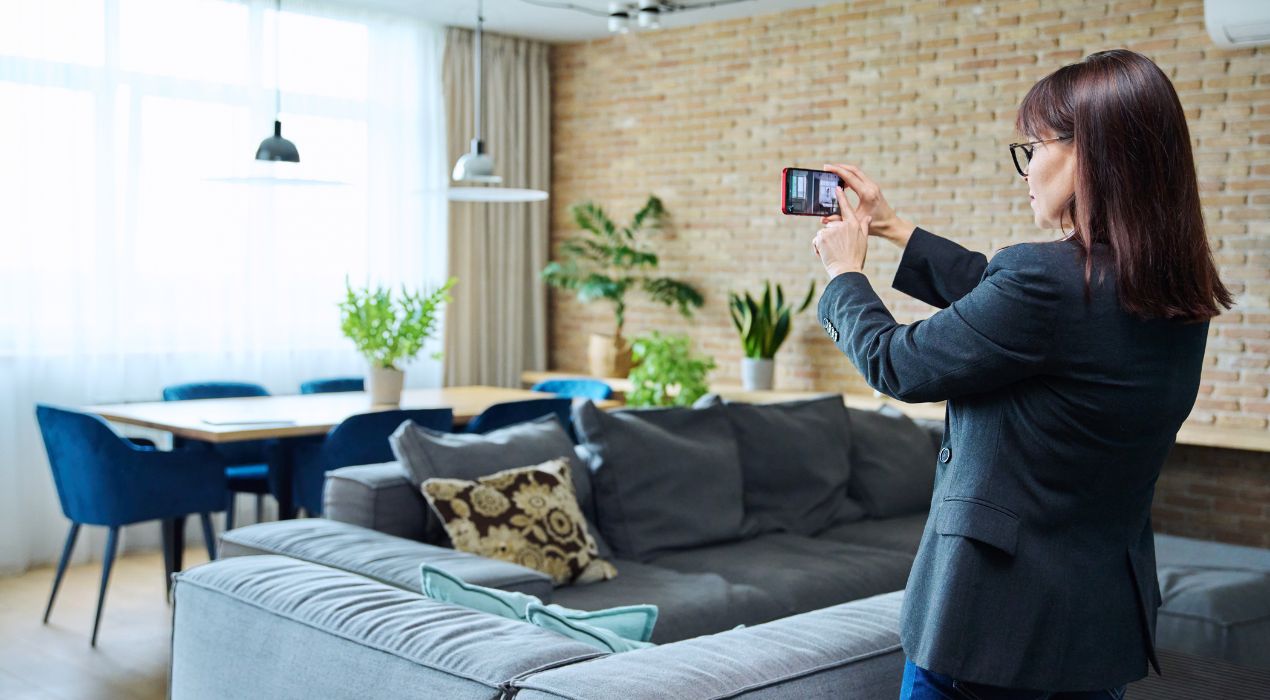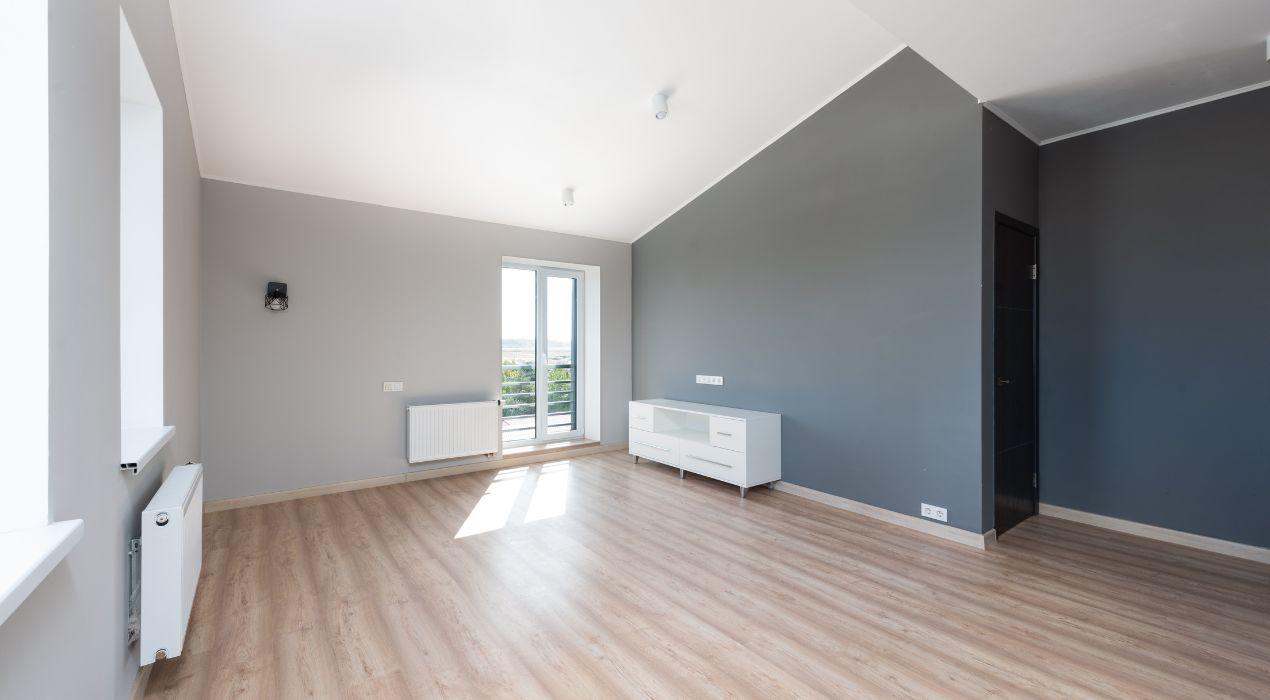When it comes to renting out a property, one of the first decisions a homeowner must make is whether to offer the space furnished or unfurnished. This choice not only affects the type of renters it attracts but also has significant implications for rental pricing, maintenance costs, and the ease of renting the property.
In this blog post, we’ll delve into the key differences between furnished and unfurnished rentals, as well as their advantages and disadvantages, helping homeowners make an informed decision that aligns with their rental strategy and market demands.
What are furnished rentals?
A furnished rental typically includes the essentials needed for daily living. There are two types of furnished properties: fully furnished and semi-furnished.
A fully-furnished property is equipped with all the necessary items a renter needs to live comfortably from the moment they move in. This includes:
- Furniture: All rooms are furnished, including bedrooms, living room, dining area, and sometimes outdoor spaces. Furniture items generally include beds, sofas, chairs, dining tables, desks, and wardrobes.
- Appliances: Essential household appliances such as a refrigerator, washing machine, stove, oven, microwave, and sometimes smaller appliances like a toaster, kettle, and coffee maker.
- Kitchenware: Fully stocked kitchen with utensils, pots, pans, dinnerware, and cutlery.
- Linens: Bedding, towels, and curtains are typically provided.
- Decor: Often, decorative items such as rugs, lamps, and artwork are included to enhance the living space.

Semi-furnished properties fall between fully furnished and unfurnished. They provide some basic furnishings but not to the extent of a fully furnished property. What’s included can vary widely, but generally, semi-furnished means:
- Basic Furniture: This might include larger items such as a bed, couch, dining table, and wardrobes.
- Basic Appliances: Common appliances like a refrigerator and stove may be included. The inclusion of a washing machine, dishwasher, or microwave is less common and varies by property.
- Minimal or No Decor: Unlike fully furnished units, semi-furnished ones typically do not include decorative items, linens, or kitchenware.
The advantages of furnished rentals
Offering a furnished rental property comes with several advantages that can be particularly appealing in certain markets.
Some key benefits are:
1. Higher rental yields
On average, property owners can charge 15-20% more for furnished long-term rentals than for unfurnished ones. The convenience and immediate livability of a furnished property make it an attractive option for certain types of renters, allowing homeowners to set a premium price.
This can significantly enhance the rental yield, making it a lucrative option for property owners looking for a higher return on investment.
2. Shorter vacancy periods
Furnished rentals tend to attract renters faster, which can lead to shorter vacancy periods. Many renters, particularly those moving for work or international students, prefer to avoid dealing with the hassle of buying furniture and setting up a new home.
They are more likely to choose rental properties that are ready to move into immediately. By reducing the downtime between renters, homeowners can maintain a steady flow of rental income and minimize potential losses from unoccupied properties.
3. Tax benefits
Furnished rentals allow property owners to leverage significant tax advantages such as depreciation deductions for furniture and appliances, immediate expense deductions for low-cost items, higher deductions for maintenance, and interest deductions on loans for purchasing furnishings, all of which can substantially reduce taxable income.
4. Attracting a specific tenant demographic
Furnished rentals are particularly appealing to certain groups of renters, such as those who are:
- Business professionals on short-term assignments
- Expatriates
- Frequent travelers
These renters are typically looking for convenience and flexibility, which furnished rentals provide. Additionally, short-term renters who might be in the area for temporary work or those attending local universities for a semester greatly value the option of moving into a fully equipped home.
This targeted appeal makes it easier for property owners to market their properties effectively and find renters who are a good fit for the type of rental offered.
The disadvantages of furnished rentals
While furnished rentals offer several advantages, they also come with specific challenges that homeowners must consider.
1. Higher upfront costs and maintenance
Furnishing a rental property involves significant upfront costs. Renters need to invest in furniture, appliances, and other household items to make the property appealing and livable. Beyond the initial purchase, maintaining these items can also be costly.
Furniture and appliances may require regular updates and repairs to keep them in good condition, adding to the overall expenses of property management. Additionally, wear and tear is typically faster in furnished rentals due to the increased usage of provided items, leading to more frequent replacements.
2. Increased liability and insurance costs
Offering a furnished rental increases the homeowner’s liability. There’s a higher risk of damage to the property’s contents, which can lead to disputes over security deposits and the condition of the furniture upon tenant turnover.
Moreover, homeowners might need to invest in more comprehensive insurance policies to cover the furniture and appliances provided, which increases the overall cost of renting out the property.
3. Potential for more frequent tenant turnover
Although furnished rentals can attract tenants more quickly, they often appeal to those seeking short-term housing. This can result in a higher turnover rate, requiring homeowners to spend more time and resources on marketing the property, screening tenants, and managing move-in and move-out processes. Frequent turnovers can lead to greater variability in rental income and potentially more periods of vacancy, especially if the property caters to a niche market that experiences seasonal demand.
These challenges highlight the importance of weighing the potential rewards against the responsibilities and risks associated with furnishing a rental property. Homeowners should consider their ability to manage these drawbacks effectively before deciding to offer a furnished rental.
Alternatively, homeowners can opt to hire a property management company, like Poplar Homes, that specializes in managing rental properties. For a small monthly fee, we will handle everything from finding tenants to addressing maintenance issues.
What are unfurnished rentals?
On the other hand, an unfurnished rental usually includes only the bare necessities. These properties generally come with no furniture, and while they might include basic appliances such as a stove and perhaps a refrigerator, renters will need to supply virtually everything else needed to turn the rental into a comfortable living space.

This option gives renters the flexibility to outfit their homes according to their tastes and needs but requires a greater initial investment in furnishings.
Benefits of unfurnished rentals
Unfurnished rentals, while seemingly less appealing at first glance due to their lack of immediate livability, actually present several significant advantages for homeowners.
1. Longer tenant occupancy
Unfurnished rentals tend to attract tenants who are looking for a longer-term living solution. Since renters bring their own furniture, they are more likely to settle in for an extended period, viewing the rental as a blank canvas on which to imprint their personal style and home life.
This can lead to longer lease terms and reduced turnover, providing homeowners with more stable, predictable rental income and fewer tenant screening processes over time.
2. Less wear and tear on furnishings
Since homeowners do not provide furnishings, there is considerably less concern about the wear and tear on furniture and appliances that would otherwise need frequent replacement or repair.
This not only reduces maintenance costs but also minimizes the hassle associated with updating and repairing furniture. The responsibility for the upkeep of personal furniture rests solely with the tenants, allowing the landlord to focus more on the maintenance of the property’s structural and operational aspects.
3. Broader market appeal
While furnished rentals appeal to a specific demographic, unfurnished rentals attract a wider range of renters. Families, long-term professionals, and individuals looking to personalize their space often prefer unfurnished units as they plan to bring their own belongings.
This broad appeal can make it easier to rent out the property in various market conditions, reducing the risk of vacancy. Additionally, since unfurnished rentals typically command lower rents, they are accessible to a larger pool of potential renters, increasing the property’s marketability.
Drawbacks of unfurnished rentals
Like its furnished counterpart, unfurnished rentals also present some drawbacks.
1. Potentially longer vacancy periods
One of the more significant challenges with unfurnished rentals is the possibility of longer vacancy periods. Since these units require renters to bring or purchase their own furniture, it might take longer to find renters who are willing to make that commitment, especially in markets where immediate move-in readiness is a priority for many.
This can be particularly pronounced in transient or highly competitive rental markets where the demand for convenience is high.
2. Lower rental income potential
Compared to furnished rentals, unfurnished rentals typically attract lower monthly rents. The lack of amenities and furnishings might not justify the higher rental prices that furnished units can command.
This could mean reduced income potential for homeowners, especially if the property is in an area where furnished rentals are in high demand due to the demographic or lifestyle of potential renters, such as business districts or university towns.
3. Need for tenants to invest in furniture
The necessity for tenants to invest in their own furniture can be a significant barrier to renting an unfurnished property. This requirement not only adds an additional financial burden on renters but also limits the pool of prospective renters to those who are willing and able to make such investments.
For individuals who are relocating temporarily, students, or those not willing to purchase furniture due to budget constraints, an unfurnished rental might not be an appealing option.
To furnish or not to furnish?
When deciding between furnished and unfurnished options, property owners should conduct thorough market research to understand the preferences and needs of potential renters in their specific location.
There are factors that are crucial in determining which option would maximize rental income and minimize your vacancy rates, such as:
- Local population’s mobility
- Average rental duration
- Size of property
- Renter demographics (such as students, business professionals, or families)
1-2 bedroom rental properties that are close to business districts and universities may attract the demographic that prefers a furnished property. On the other hand, single-family homes or properties that are in residential areas may attract families who are planning to stay for the long term. Thus, keeping your property unfurnished can work to your advantage.
If you’re new to the rental property business, it’s also best to keep your property unfurnished. Having a furnished property can add more work to an already long list of things you should do as a property owner. The extra maintenance issues that could arise from the appliances, as well as the added things to expect, may require more work and knowledge.
Recommended: Tenant Screening Checklist: 8 Things Landlords should look for
Final thoughts
Both furnished and unfurnished rental properties offer some unique advantages. Furnished properties offer higher yields, shorter vacancy rates, and tremendous tax benefits, but they may not be the best option in certain areas, and they require a large investment.
Unfurnished properties, on the other hand, offer longer tenant occupancy, which can give you a more predictable rental income. It also has a broader market appeal which may make it easier to lease in most residential areas. But if you keep your property unfurnished in an area where the demand for furnished properties is high, you may miss out on greater yields. The key is to do your research and analyze which type of property works best in your location.
Recent Comments